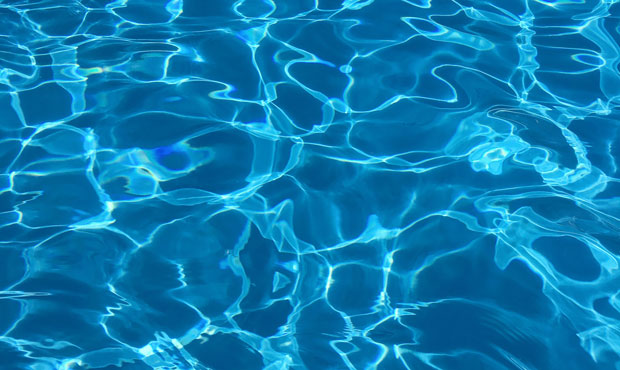Finding the right school for your child
Jun 17, 2014, 6:48 PM | Updated: 6:48 pm
Elementary school enrollment deadlines are just weeks away and it’s crunch time on getting your child into the right school.
What used to be the clear choice, neighborhood schools are now only one of many viable options for students.
“Gone are the days of simply sending your kid to the neighborhood school,” said Brittany Fellows, 32, whose daughter will be starting kindergarten in Boise, Idaho, this fall. “That’s what my parents did, but things are different these days. I can’t just make the decision to send my daughter to a school just because it’s close.”
Though still considered pillars of the community, neighborhood schools are losing their first-choice standing in the sea of increasing public and private school options. Registration deadlines moving up the calendar every year can make the decision intimidating, especially for first-time parents and families new to the area.
“Decisions have to be made, and it’s best when they are made thoughtfully,” said Stephen Boone, an administrator of admissions in Oregon’s Coos Bay District. “Time is winding down, but that doesn’t mean you don’t have options.”
Most schools with traditional schedules have enrollment deadlines through mid-July, but year-round schools are looking to close registration this month.
Know what your looking at
Delores Thatcher is a school-placement specialist in New York, and she said the No. 1 mistake parents who send their children to private schools make is not researching what makes each school different.
“Parents often think that the more expensive a school is the better it is,” Thatcher said. “But that’s hardly the case. This may be shocking to some, but education isn’t really a riddle you can throw money at to solve.”
Thatcher said you have to know what each type of school has to offer, that way you’ll better match one to your child. She finds that most parents don’t know what makes a charter school different from a private school or even that charter schools are public institutions. According to Thatcher, there are five types of schools available to students that are worth looking into: neighborhood, charter, private, magnet and virtual schools.
Public Schools
Neighborhood Schools
“Most obviously your neighborhood school is public and can often times be your best bet,” Thatcher said. “Unless you’re in a low-income or inner city area, your local school will be pretty competitive.”
What makes a neighborhood school appealing, beyond academics, is close proximity. Not only can the child walk to and from school, classmates will live nearby and teachers are often community members.
“Local schools thrive in community-based areas,” Thatcher said. “If you live in an area where everyone is dedicated to making it a clean, safe, family-friendly environment, your school will likely be as good as gold.”
An increasing number of districts are offering a selection of public schools to choose from. These new options allow parents to tailor their children’s education to fit each child’s strengths and weaknesses.
Charter Schools
A charter school is an alternative to traditional schools without the high cost of tuition associated with private schools. Charters have control over their curriculum, grading systems and teacher-accreditation policies.
Charters are increasing in popularity because of their freedom from government mandates. According to the U.S. Department of Education, in 2011 1.8 million students went to a charter school and a projected 2.6 million students will be enrolled in a charter school.
“Charter schools are great for parents who are looking for a school capable of paying more attention to each child,” Thatcher said. “They hold the appeal of a smaller community with less bureaucracy than what you’ll find at a local school.”
Charter schools typically have small class sizes, around 20 students per teacher, whereas public schools have between 24 and 33 students per teacher.
“They also have a great sense of community,” Thatcher said. “But what makes a charter community stand out is that they are for those who prefer to ‘choose their family.’ Local schools are a bit like the family you were born into, you don’t have a say; there are some gems and some crazies in there. Charters are more like the family you get to create.”
Thatcher said it’s best to look at what the charter schools in your area cater to. Sometimes they focus on math and science, some on art or theatre. If your child has an obvious niche, charter schools are great options.
Magnet Schools
Magnet schools were originally designed to attract students from all racial and socioeconomic groups through unique and outstanding academic programs. They were created to confront the problem of segregation in schools.
Though ethnicity is still a significant focus of magnet schools, it’s not the primary focus anymore. Magnet schools have focused in more on specific areas of study, looking for students who have high aptitudes in special interest areas. Others are focused on specific education philosophies.
Like charters, magnet schools are often mistaken for private schools. They are public and are increasingly becoming the pedagogical guinea pigs of innovative school districts.
Because of magnet schools’ opt-in mentality, they prove to be strong competitors in the race for best option. The more involved a parent is in their child’s education, the better the child’s chances at success and magnet schools require heavy parent involvement from the beginning.
Virtual Schools
Online schools are the newest education option. Even though virtual schools have a past that associates them with GED and credit-recovery programs, they are experiencing a rebirth of sorts.
“Online schools that allow one to retake a failed class or receive a GED are crucial to the education and employment front, but there is immense room for education innovation in online schools,” said Claire Goldsmith, director of external relations and admission of Pre-Collegiate Studies at Stanford University.
Virtual schools are a new frontier of education and therefore have obstacles for the students and instructors alike. According to the U.S. Department of Education, in 2011 the number of students whose education was entirely online was 450,000 and that number is projected to be 3.78 million.
“Courses that allow for a student to work at their own pace can be very tempting,” Thatcher said, “and for many that’s great. But there is room there for your child to slip between the cracks.”
Goldsmith suggested that when considering an online program for your child to be a smart consumer as you would with anything else. She said to make sure that there is a strong sense of community, especially when dealing with young children.
“Not all online schools are created equally, and if you want your child to thrive, make sure they aren’t isolated in a course that consists only of submitting assignments and reading bulletin boards,” she said.
Private schools
“For some, private schools are like the holy grail of education,” Thatcher said. “In many ways, private schools can be considered superior, but I always tell my clients to move forward with such an expense with caution.”
Private schools have the privilege of the best books, technology, smaller classes and highly trained educators. The curriculum is typically much more challenging and there is less grade inflation. But those advantages often come with a hefty price tag. The average cost to send your child to a private school is $10,045. Religious schools run at the lower end, ranging between $7,000 and $9,000 a year. If you want to ensure a secular private education for your child, the Council for American Private Education says that you can expect to pay an average of $16,250 in tuition every year.
“Parents come to me wanting me to help them find a way to afford some high-brow private school,” Thatcher said. “Private schools have prestige and tradition and history, but what they don’t have is the same number of school days and accredited teachers. You really need to research private schools to be sure you’re getting what you’re looking for.
Thatcher said the real benefits of private school come in when a child has really struggled socially in public schooling or when a family is very religious and looking for a complementary education.
Beyond social and religious reasons for attending a private school, there is the improved chance of admission to a selective university. Research has shown that this is particularly true of upper income to middle-income boys looking to attend a highly selective university, where many more of the slots are given to girls and low-income students.
Making the decision
The U.S. Department of Education suggests a four-step process to selecting the right school for children.
“First you need to really consider your child and your family,” Samantha Dougary from the Department of Education said. “You have to think about what will be best for your child. You know him or her best, so only you really know what the best decision will be.”
Dougary suggested that you look at the type of environment your child functions best in. Does your child need rigid structure or does he do better with a looser pace? Does your child need to be challenged more intellectually or does she need help to finish projects?
Second, you need to gather information on the schools you’re considering. Every public school is given a report card by the state. This measures test scores and improvement or decline year to year.
Additionally, there are websites that give valuable information on specific schools and districts. Reliable websites are greatschools.net and publicschoolreview.com. Both websites allow you to search schools in your area, see their report cards, what other parents are saying about their schools and read forums on changing academic policies in your area.
The third step to choosing the right school is to visit and observe.
“Go to the school, talk with the teachers and principal,” Dougary said. “You should expect to be taken on a tour. Ask plenty of questions and watch to see how classrooms function.”
Dougary said that it’s best to not go during the first or last week of school or right before or after holidays to best see how teachers handle classes.
Look for whether or not the kids are busy and actively engaged. Be sure the teachers and administrators are friendly, and openly and honestly answer your questions. Dougary said that skirting around questions is always a red flag.
The fourth step is to apply to the schools you’ve had positive experiences with. Though elementary schools typically hold registration through early summer, only traditional neighborhood schools accept late registration.
EMAIL: nshepard@deseretnews.com TWITTER: @NicoleEShepard![]()








